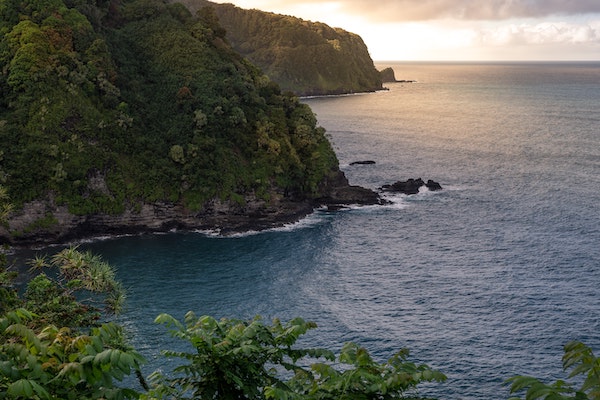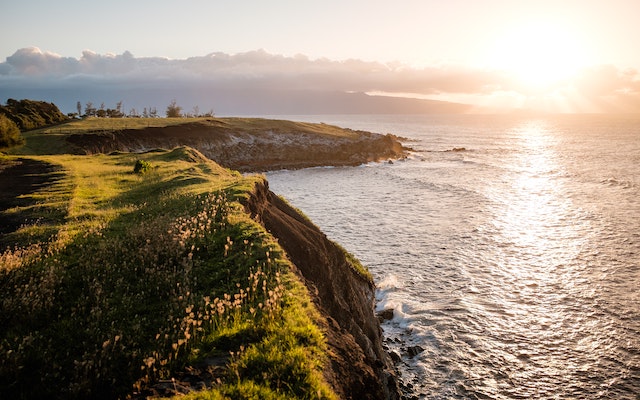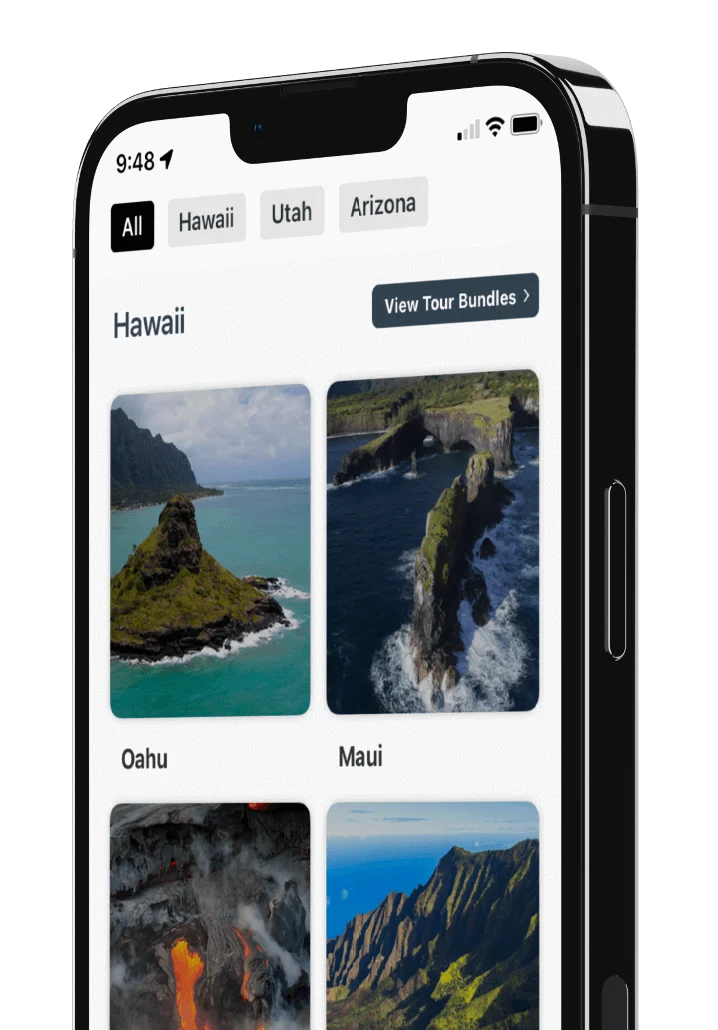
The Ultimate Maui Travel Guide, Updated 2022
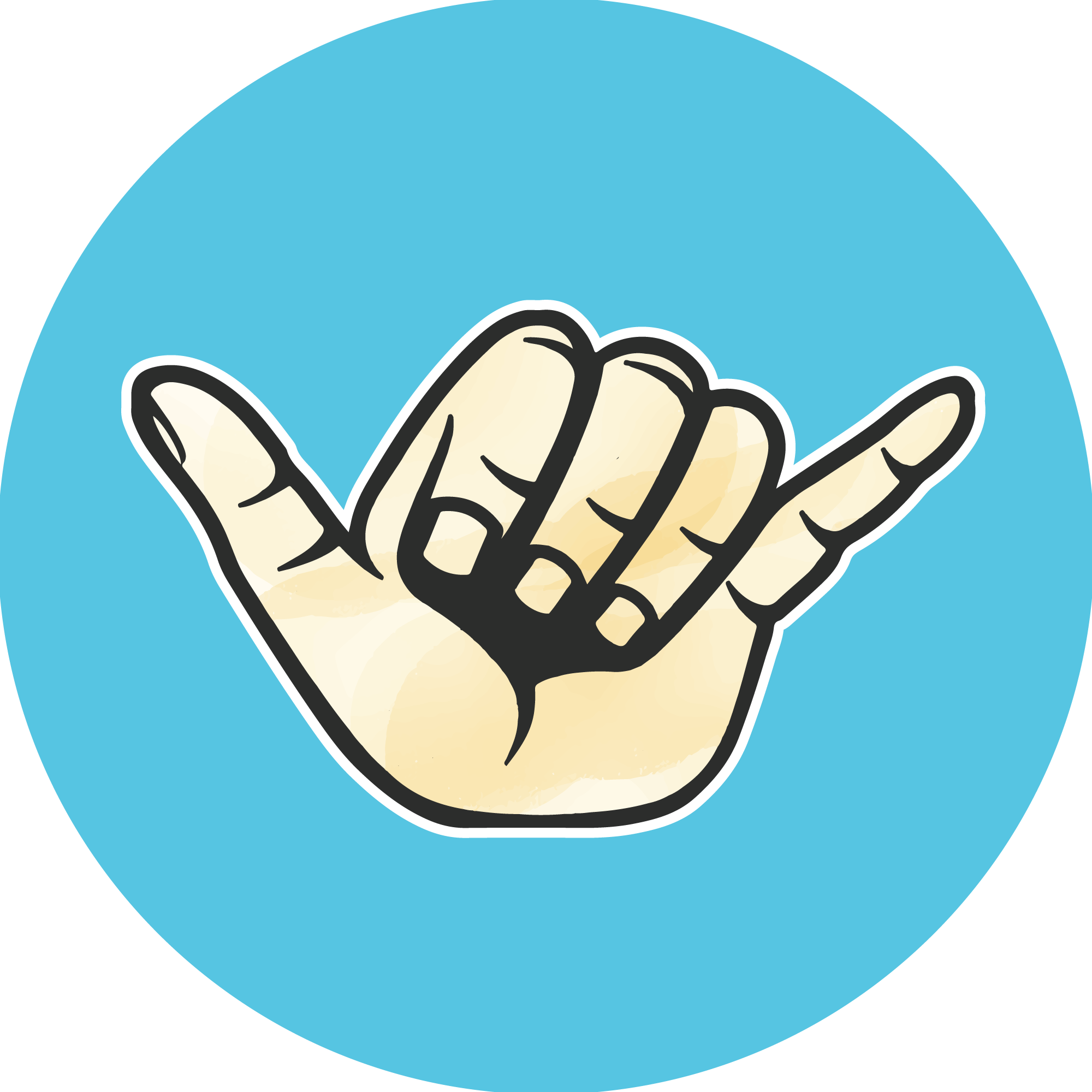
Maui is unique for its combination of remoteness and habitability. If you’re looking for an island resort or remote jungle experience, like what you see in the movies, Maui is probably the island for you. And if you’re looking for beaches, Maui’s got what you need as well:
Maui has over 30 miles of beach shoreline.
Speaking of the island’s geography, it’s also quite unique with its isthmus connecting the two volcanic masses that created the island.
This geography, along with the relative sunshine, trade winds, and varying humidity, create what is known as microclimates. These microclimates will set the tone for your stay in different regions of the island. Keep this in mind as you use this guide to plan your trip to the Island of Maui.
Want even more help planning your trip to Maui? Check out this episode of Hawaii's Best Podcast featuring Shaka Guide's Co-Founder, Andrew Fowers!
REGIONS
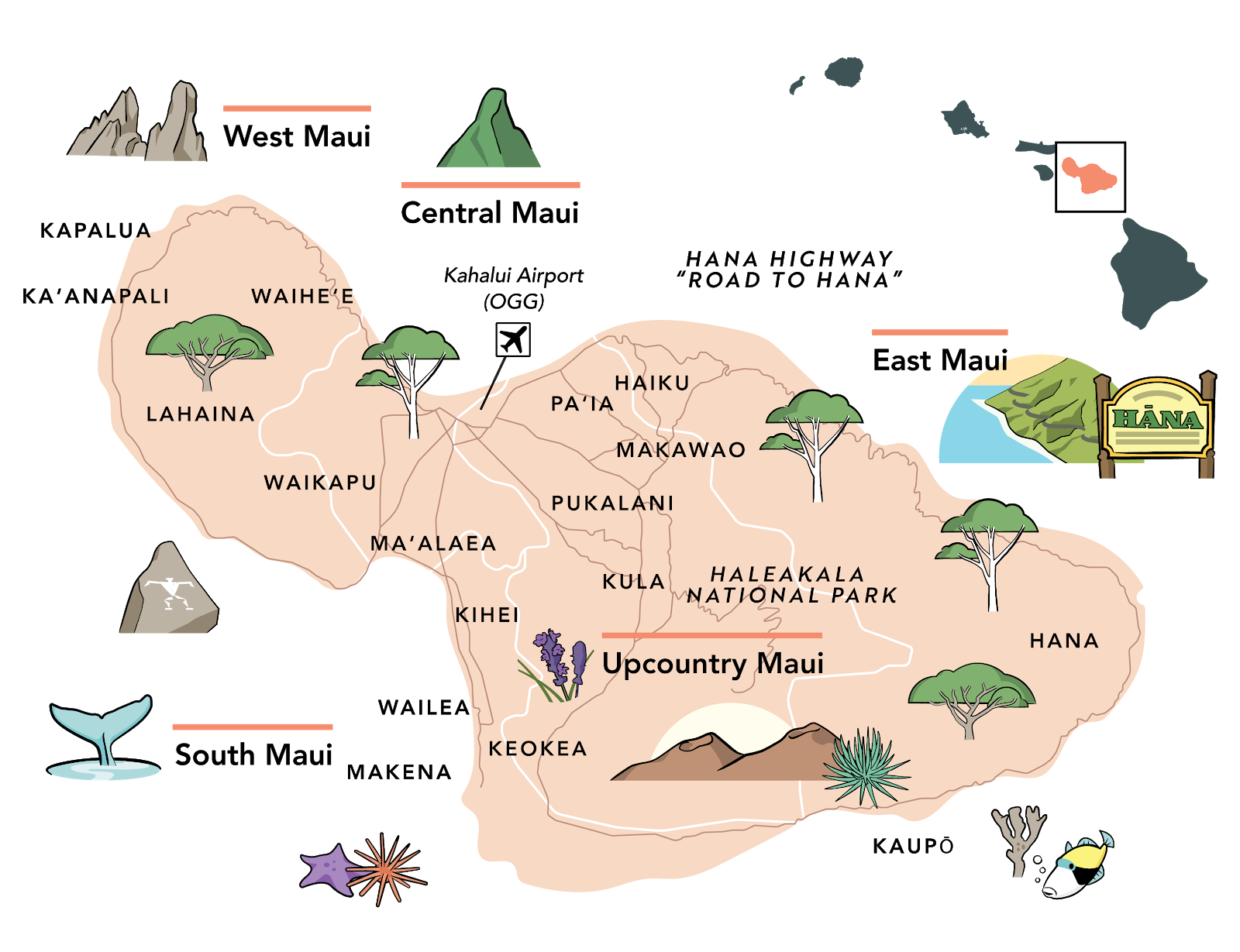
Maui has five distinct regions:
Each region has its own activities and attractions. For each region, we’ll go over where to stay, beaches and hikes.
Here’s what else you’ll find in this guide:
- Activities, Things to Do
- The Best Time to Visit
- How to Get Around
- Budgeting
- Visiting During the Covid-19 Pandemic
West Maui
West Maui is the major resort area on the island. Here you'll find the seaside town of Lahaina, and famous beaches like Kaanapali and Kapalua.
WHERE TO STAY IN WEST MAUI
Resort Areas in West Maui
 Kapalua; Hawaii Tourism Authority (HTA) / Tor Johnson
Kapalua; Hawaii Tourism Authority (HTA) / Tor Johnson
Looking for accommodations in West Maui? Head to Honoapiilani Highway. Most of Honoapiilani Highway runs along the island's leeward beaches (the leeward side is a bit drier and sunnier than the windward side). This being true, much of the highway is also spotted with resorts and hotels from Kapalua all the way to Kaanapali. With the beach in front of you and the West Maui Mountains behind you, the scenery couldn’t get much better along Honoapiilani Highway.
However, you’ll be paying some of the most expensive lodging costs in all of Hawaii if you chose to stay here.
Accommodations generally run from $300 to $700. Some super luxurious options in this area can cost several thousand a night.
Camping in West Maui
Camp Olowalu
Generally, privately run campsites can be both much worse and much nicer than government-run grounds. The ones on Maui are all extremely nice.
At this private campground, you’ll find amenities and facilities that you might not be used to with state or federally run sites including:
- Instant hot water showers
- Outdoor dishwashing station
- Wi-Fi internet hotspot at check-in
- Trash & recycling stations
- Private parking
- Two charging stations
- Bathrooms with sink, mirror, hand soap, paper towels, and toilet paper
- Firepit
- BBQ grills
BEACHES IN WEST MAUI
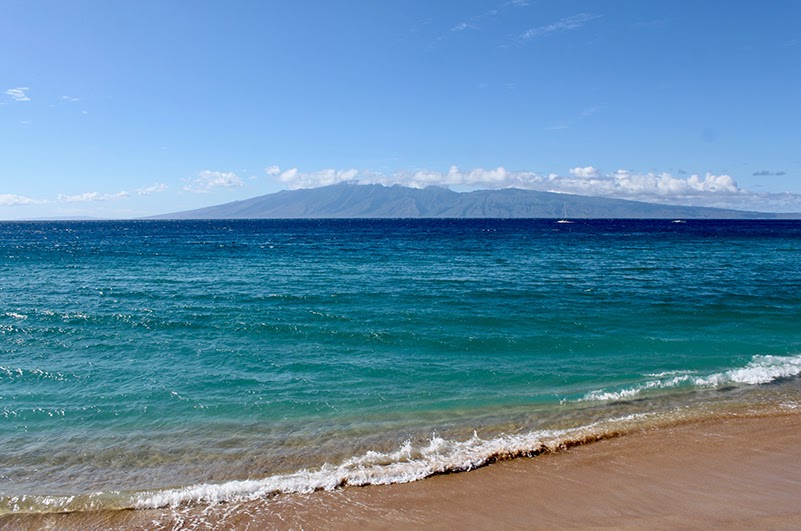 Kaanapali Beach; Andrew Bain / Unsplash
Kaanapali Beach; Andrew Bain / Unsplash
Kaanapali Beach
This western-Maui beach is close to several resorts, which means you have great access to shops, restaurants, and other tourist and luxury services. If you’re looking for a Waikiki-style experience on western Maui, this is a great option.
Kaanapali Beach was once named America’s Most Beautiful Beach, and it’s easy to see why. This white-sand beach has clear blue water and gets great weather on most days of the year. The beach is surrounded by a boardwalk area with shops, food, and resorts.
D.T. Fleming Beach Park
D.T. Fleming Beach is yet another gorgeous Maui beach. It has excellent services and upkeep including lifeguards, grills, picnic tables, restrooms, and a playground - all kept in immaculate condition. The scenery is beautiful with crystal-clear water that's perfect for swimming as well as a wonderful shady treeline.
Hanakao'o Beach Park (Canoe Beach)
Just north of Kaanapali, connected by a sliver of beach, Hanakao’o is another awesome beach that’s often much less crowded than Kaanapali. If you sign up for an outrigger tour, you’ll likely be launching from this beach, hence the name.
Kapalua Beach
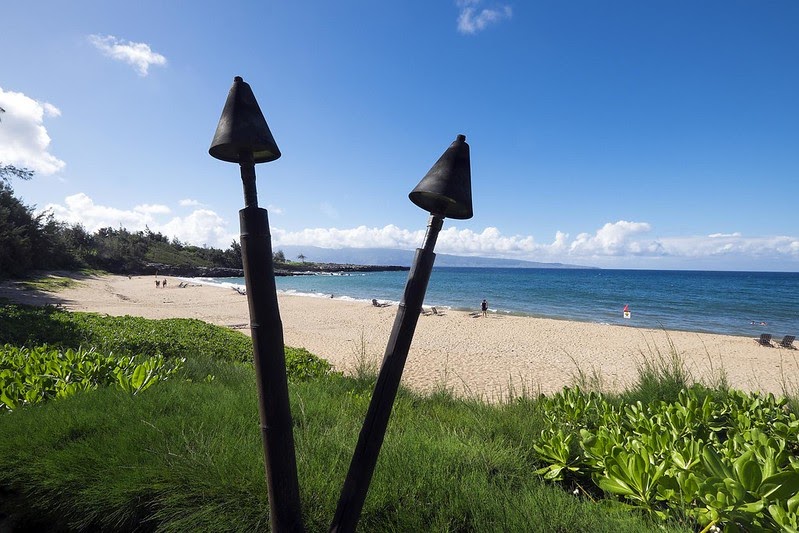 Kapalua Beach; Christopher Michel / Flickr; CC-BY-2.0
Kapalua Beach; Christopher Michel / Flickr; CC-BY-2.0
This beach is known for its beautiful scenery and excellent snorkeling conditions. You’re likely to see sea turtles, eels, and tropical fish snorkeling here. Please remember to keep a respectful distance from all marine life and coral you come in contact with.
Launiupoko Beach
This is one of the best swimming beaches on the island. A pool is formed by a lava rock wall on the shore which breaks any strong waves or currents. This is also a great area for snorkeling as many smaller tropical fish are safe inside the pool.
HIKING
 Iao Valley State Park; Bernard Spragg. NZ / Flickr; CC0-1.0
Iao Valley State Park; Bernard Spragg. NZ / Flickr; CC0-1.0
Acid War Zone Trail
Don’t let the name of this hike discourage you! There’s no risk of becoming involved in any sort of chemical conflict between nation-states. The trail is named for the erosion of rocks from salt and wind that causes the landscape to have a vaguely melted feel as though acid had been poured across the rocks.
This trail has an awesome blowhole, views of the ocean, and a heart-shaped hole in the ground through which you can see the ocean surface.
Waihee Ridge Trail
If you’re looking for a more challenging hike, Waihee Ridge Trail offers a bit more difficult hiking. As usual, the rewards that come along with it include stunning views and gorgeous surrounding foliage. Between the jungle, ridge tops, and ocean views this feels like a truly Hawaiian hike.
This 2.5-mile hike (five-mile round trip) hike gets pretty steep, so watch your step and be careful on the way back down. Pick another hike if it’s raining as the mud on Waihee ridge can be quite dangerous.
Mahana Ridge Trail
Right near DT Fleming Beach, there's a great hike that you might want to try.
The trail is 10-miles long, but you can really stop after the first couple of miles and turn back. There’s not much more to see after the first few views and the hike gets extremely muddy.
Dragon Teeth Trail
This half-mile hike follows the rocky shoreline and offers beautiful seaside views. The trail got its name for the jagged rocks near the shoreline that, from a distance, look like the teeth of a dragon.
Want to visit West Maui? Check out our West Maui Coastline Driving Tour. You can even start the tour in the resort areas of Kaanapali and Kapalua!
Central Maui
 Kahului; Justin Ennis / Flickr; CC-BY-2.0
Kahului; Justin Ennis / Flickr; CC-BY-2.0
WHERE TO STAY IN CENTRAL MAUI
Central Maui is home to Kahului, which is where the airport is located. Here, you'll also find the town of Wailuku.
Resort Areas in Central Maui
Kahului is the resort area in central Maui and it's located on the island's windward lowland region. The area has more stable and moderate temperatures than other parts of the island. However, this comes at the cost of regular cloud cover and showers.
Additionally, it's the largest town and the commercial center of Maui. It’s also a very residential area which means there’s only a few hotels and resorts for you to choose from. If you’re looking to stay near the airport, Courtyard by Marriot is an excellent hotel adjacent to the Kanaha Pond State Wildlife Sanctuary.
If you want a beachfront location instead, Maui Beach Hotel is a beautiful establishment. Maui Seaside Hotel is similar and a bit less expensive. You can expect to pay about $200 per night to stay in Kahului.
BEACHES IN CENTRAL MAUI
Kanaha Beach Park
If you’re staying in the Kahului area, this beach is conveniently located right in town near the airport. This beautiful, two-mile white sand beach is another excellent beach for windsurfing and other watersports.
Several companies offer kite surfing and windsurfing lessons from this launching point.
Baldwin Beach Park
If you’re looking for a very traditional beach experience, Baldwin Beach Park is probably exactly what you’re looking for. It’s about a mile and a half long so it's not overly crowded.
There's a nice shady tree line right behind the beach, and the water is great for swimming. Baldwin Beach Park has full facilities from lifeguards and bathrooms to picnic tables and grill pits.
Hookipa Beach Park
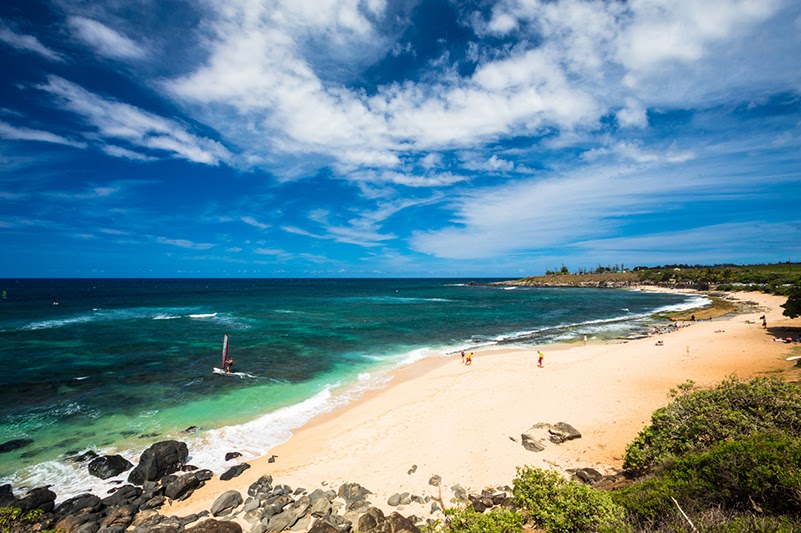 Hookipa Beach Park; Hawaii Tourism Authority (HTA) / Tor Johnson
Hookipa Beach Park; Hawaii Tourism Authority (HTA) / Tor Johnson
This beach is known for its world-class windsurfing thanks to the northeast trade winds. Even if you aren’t a surfer, this is a great place to hang out and watch the windsurfers for a while from the scenic lookout.
This popular surfing beach also has picnic tables, grills, and pavilions for public use.
RELATED: Must-See Scenic Spots in Maui
HIKING IN CENTRAL MAUI
Iao Valley State Park
Iao Valley State Park has a few great, well-maintained trails. They mostly all begin at one trailhead right after you enter the park. The hikes themselves are a great experience and you’ll get an awesome view of the Iao Needle, as well.
Upcountry Maui
Located inland, Upcountry Maui is home to farmland and the summit district of Haleakala National Park.
WHERE TO STAY IN UPCOUNTRY MAUI
Resort Areas in Upcountry Maui
Keokea Ranch, a bit inland from Wailea, is wonderfully private with an excellent view of the ocean from the higher elevation. Kalua Lodge is even further inland and doesn’t have quite the level of luxury as other popular Maui establishments. That being said, it more than makes up for this in charm and delicious food.
Camping in Upcountry Maui
Hosmer Grove
Hosmer Grove is one of several camping options in Haleakala National Park. Campgrounds within Haleakala have a three-night per month maximum stay. This campground is pretty high in the park, sitting at about 7,000 feet.
Here's some advice:
Remember that temperatures in this microclimate get below freezing at night, so bring warm clothing and equipment. Temperatures can dip into the upper 40's overnight.
There’s an excellent nature walk loop connected to the camping lawn. Facilities include drinking water, vault toilets, grills, and tables.
Holua Campground
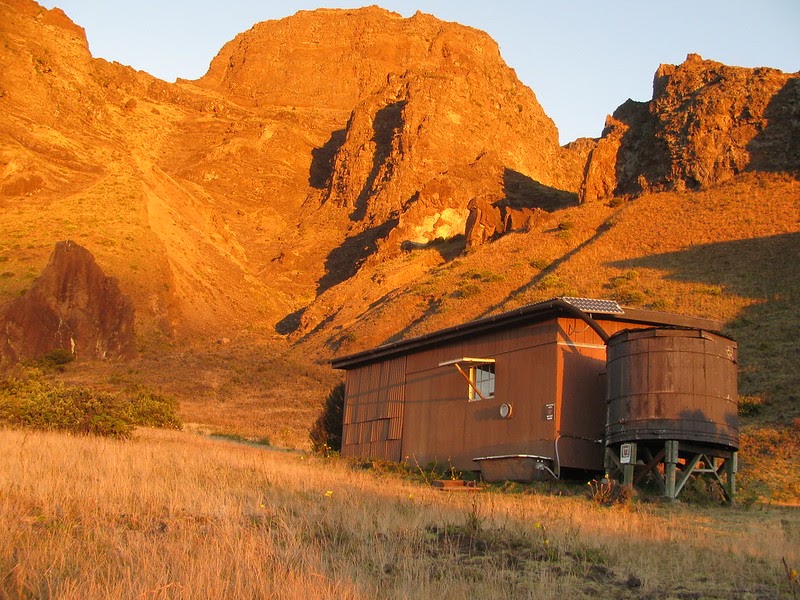 Holua Campground at Sunrise; Forest & Kim Starr / Flickr; CC-BY-2.0
Holua Campground at Sunrise; Forest & Kim Starr / Flickr; CC-BY-2.0
If you’re looking for a wilderness adventure, Holua Campground is a beautiful spot inside the Haleakala wilderness. It can be accessed by a 3.7-mile hike along the Halemau`u Trail or a 7.4-mile hike from the Sliding Sands trailhead. There are few facilities, so plan on packing in and out everything you might need.
Holua Campground does offer cabins for rent, which you can book here.
Cabins are made available for reservations six months in advance, and you’ll need to book about that far in advance to get one. Cabins are usually reserved two or three days after they are available.
So start planning now.
Cancellations do happen, in which case a night or two might open up unexpectedly, so keep an eye on the reservation page.
Backpacking into these cabins is an amazing adventure and well worth the effort you’ll have to put in to secure a reservation.
From this location, you’ll have great access to tons of hikes and backpacking adventures within Haleakala National Park. The campground’s landscape is mostly shrubbery, but the area and cabins are quite picturesque.
Paliku Campsite
 View from Paliku Cabin; Kelcy Shepherd / Flickr; CC-BY-SA-2.0
View from Paliku Cabin; Kelcy Shepherd / Flickr; CC-BY-SA-2.0
If you’re looking for an even grander adventure, Paliku Campsite is at the base of a cliffside jungle.
The area receives a lot of rainfall from moisture build up in the cliffs behind Paliku so it’s part of the rainforest microclimate region of Haleakala.
The backpacking trails to Paliku are quite a bit longer and more strenuous than the trails to Holua. The campsite is about 9.3 miles from the Sliding Sands trailhead or about 10.4 miles along the Halemau’u Trail.
The same style cabins are available for rental as at Holua. However, the ones at Paliku can be even more competitive to rent.
For more info backpacking to Paliku and Holua check out the "Activities" section of this article below!
BEACHES IN UPCOUNTRY MAUI
Upcountry Maui is inland, so there are no beaches to share in this region, but there are LOADS of great hikes in Haleakala National Park. Check out the section below to see our favorites.
HIKING IN UPCOUNTRY MAUI
Haleakala National Park
Haleakala is a must-see for any Maui visitors. There are a ton of trails to try out of varying lengths. Whether you want to do a short, well-developed hike or a long overnight backpacking trip into the remote wilderness, Haleakala National park will have what you’re looking for.
Four of our favorite hikes in Haleakala are:
- Halemau'u Crater Hike
- Sliding Sands Trail
- Pa Ka'oao Trail
- Hosmer Grove Trail
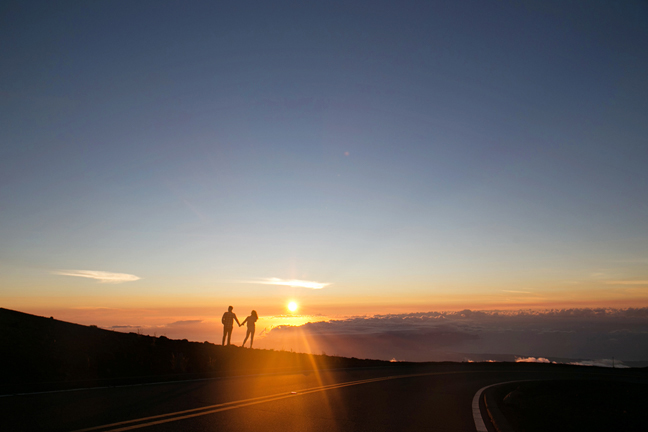 Atop Haleakala; Hawaii Tourism Authority (HTA)
Atop Haleakala; Hawaii Tourism Authority (HTA)
RELATED: Best Day Hikes in Haleakala National Park
Want to visit Haleakala National Park? Check out our Sunrise at Haleakala National Park and Sunset and Stargazing Haleakala Tours! It’s the ultimate way to visit the park.
East Maui
East Maui is home to the famous Hana Highway - also known as the Road to Hana.
WHERE TO STAY IN EAST MAUI
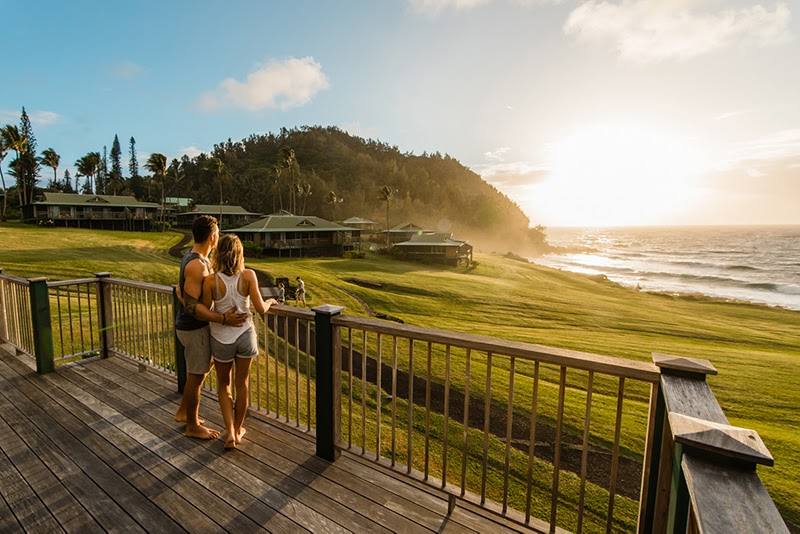 Hana; Hawaii Tourism Authority (HTA) / Tommy Lundberg
Hana; Hawaii Tourism Authority (HTA) / Tommy Lundberg
Resort Areas in East Maui
There are a few options for resorts on Maui’s southeastern coast. These are generally located in Hana Town and are quite nice with price tags to match. Some resorts in Hana include Hana Kai Maui will run about $300 per night and Travaasa Hana will cost around $650. Both of these locations are on the gorgeous Hana Bay.
Camping in East Maui
Kipahulu Campground
This campground is adjacent to the recently Pool of Oheo in Haleakala National Park. If you chose to camp here you’ll be waking up right at the trailhead that leads to this legendary swimming hole (although swimming is closed due to Covid-19). This campground’s facilities include vault toilets, grills, and picnic tables.
Wai’anapanapa State Park
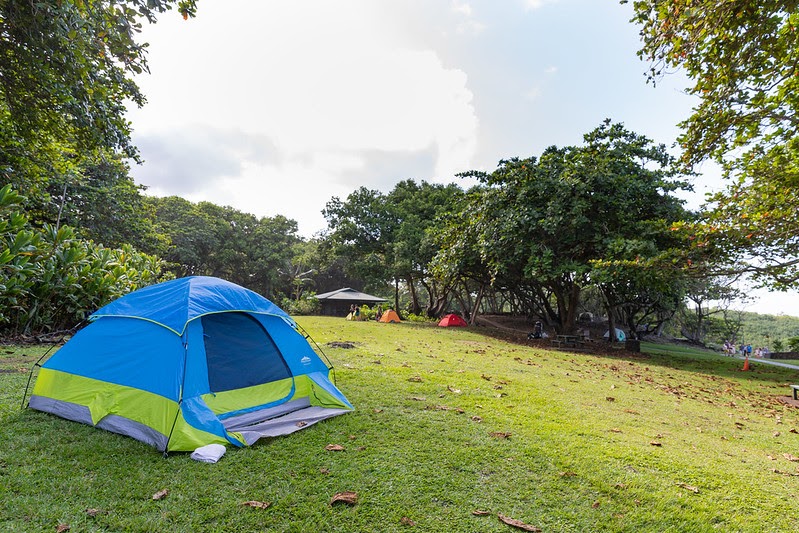 Waianapanapa Camping Ground; dronepicr / Flickr; CC-BY-2.0
Waianapanapa Camping Ground; dronepicr / Flickr; CC-BY-2.0
Wai’anapanapa State Park is a beautiful place to spend a day - or more. The park has an open lawn where you are allowed to pitch a tent. There’s a bathroom nearby, but those are the only facilities.
Did you know? Wai'anapanapa means something akin to glistening water in Hawaiian.
The area was named after the freshwater streams and pools nearby.
Camp Keanae
Located in near the Keanae Peninsula about 50 minutes from Hana Town on the Road to Hana, The YMCA owns and operates this campground. There are YMCA facilities on-site including a gym and showers, so this is a great place to call home base if you’re looking to camp for the entirety of your stay.
BEACHES IN EAST MAUI
There are a few beautiful beaches on the eastern edge of the Maui. These are a bit more remote and less developed than those on the rest of the island. If you’re looking to escape the crowds, it can be worth it to make a trip out to these more remote locations.
Black Sand Beach at Waianapanapa State Park
Inside of Waianapanapa State Park, you’ll find the best black sand beach on the island. This beautiful cove features a lava tube and blowholes, in addition to swimmable blue waters and scenic green coast. You now need a reservation to visit Waianapanapa. Check out our travel guide to learn more about making a reservation and planning your trip to this breathtaking beach.
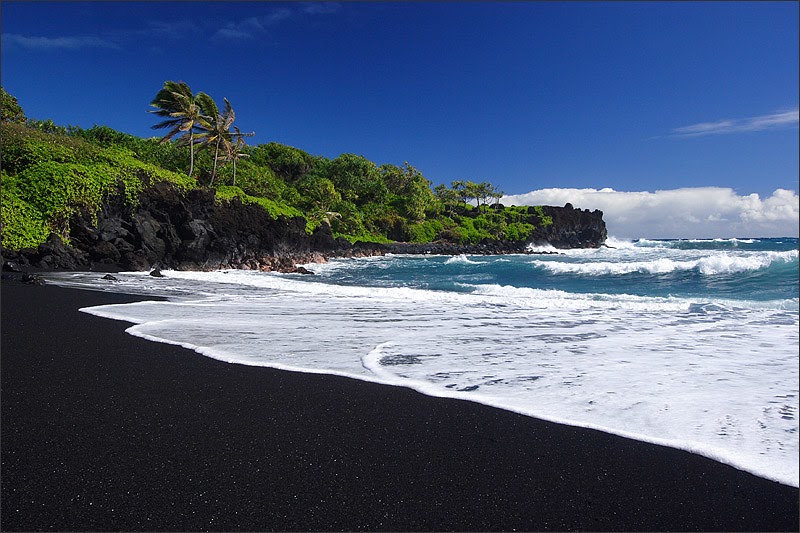 Waianapanapa Black Sand Beach; Stacy Egan / Flickr; CC-BY-2.0
Waianapanapa Black Sand Beach; Stacy Egan / Flickr; CC-BY-2.0
RELATED: Waianapanapa State Park Travel Guide
Hamoa Beach
 Hamoa Beach
Hamoa Beach
Hamoa Beach is one of the least crowded beaches on the entire island of Maui. This pearly white-sand beach with baby-blue water is surrounded by a lovely green coastal region. You won’t believe how much real estate you get to yourself on such a gorgeous beach.
HIKING IN EAST MAUI
Pools of Oheo
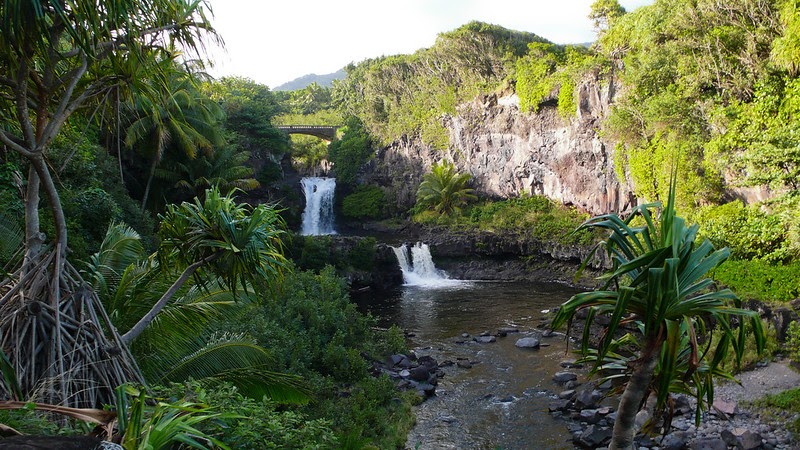 Oheo Gulch; Drazz / Flickr; CC-BY-SA-2.0
Oheo Gulch; Drazz / Flickr; CC-BY-SA-2.0
The Pools of Oheo - also known as Seven Sacred Pools - is one of the most surreal adventures on the island. The hike is pretty short and easy, but the reward is truly amazing. The hike ends in the famous Pools of Oheo Gulch, which consists of several freshwater pools in the jungle along with a beautiful waterfall. Please note, Seven Sacred Pools are located in Haleakala National Park and require an entrance fee to visit. They are also currently closed to swimming due to the ongoing Covid-19 pandemic.
RELATED: Seven Sacred Pools Travel Guide
Waianapanapa State Park
Waianapanapa State Park is a wonderful area with tons to see. The beach is often considered the main attraction, however, the park is named after the brilliant freshwater pools. You can find these pools near the Waianapanapa Park parking area.
The Ke Ala Loa O Maui trail is also in this park. The trail has wonderful views and runs along an ancient Hawaiian road built by a Hawaiian chief in the 15th century. You can also try the 3-mile Kipapa O Kihapiilani Trail which runs along two beautiful coves and Hawaiian ruins. Please be respectful at these ancient Hawaiian sites. Please note, you need to make an advance reservation to visit Waianapanapa State Park. You can do that here.
Twin Falls
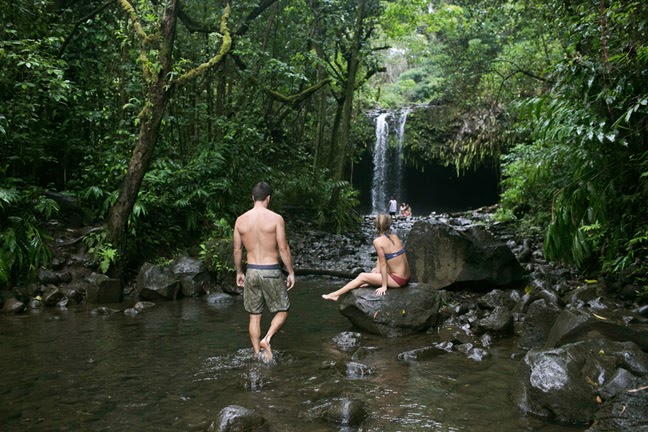 Twin Falls; Hawaii Tourism Authority (HTA) / Tor Johnson
Twin Falls; Hawaii Tourism Authority (HTA) / Tor Johnson
There are a ton of falls on the Road to Hana, but Twin Falls is a favorite and most easily accessed falls on the islands. The falls are pretty huge and you’re able to swim at the base.
The hike to the falls is quite short and easy for almost any skill level. This is a great adventure for the entire family. Please note, there is a parking fee to visit the falls.
Pipiwai Trail
This three-and-a-half mile rainforest trail offers beautiful views of two waterfalls and a bamboo forest. The hike is rated moderate and takes about 2 hours to complete, however, if you’re short on time, or looking for a family-friendly option, hike to the first lookout point where you can see Waimoku Falls. This trail is located in Haleakala National Park and requires an entrance fee.
Related: Pipiwai Trail and Waimoku Falls Travel Guide
THE ROAD TO HANA
We couldn’t talk about East Maui without mentioning the Road to Hana. This 64+ mile stretch of Hana Highway is dotted with waterfalls, swimming holes, hikes, and beaches. If you’re looking to do this magical roadtrip, check out our THREE Road to Hana Tours: Classic, Loop and Reverse.
Our Road to Hana tours are the highest rated in the App and Google Play stores and feature over twenty stops along this stretch of road. Take a look at our Road to Hana itineraries below and when you’re ready to plan your trip, here’s how to find the best Shaka Guide Road to Hana tour for you!
RELATED: Which Road to Hana Tour is Right For You? and Drive the Road to Hana Like a Pro with These Tips
Looking to visit East Maui? Check out our Classic, Reverse and Loop Road to Hana Tours! They are the highest rated self-guided Road to Hana tours in the App Store and Google Play Store with over 15,000 reviews.
South Maui
WHERE TO STAY IN SOUTH MAUI
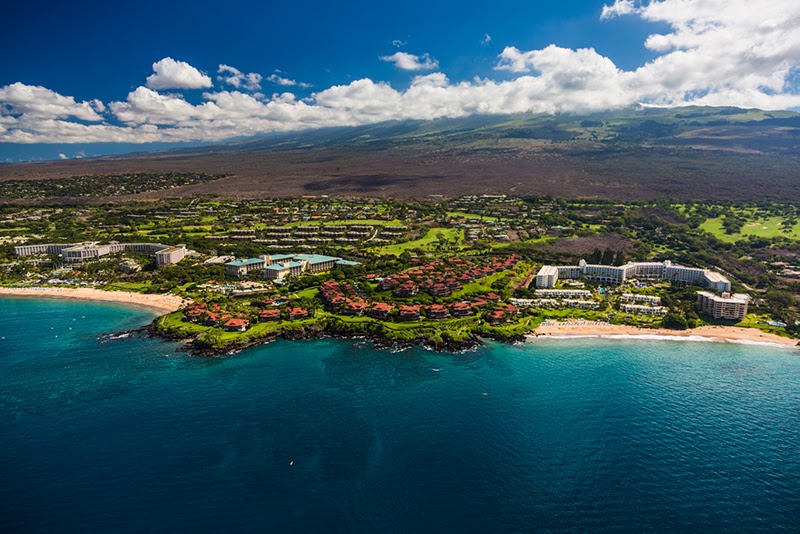 Wailea, Maui; Hawaii Tourism Authority (HTA) / Tor Johnson
Wailea, Maui; Hawaii Tourism Authority (HTA) / Tor Johnson
Resort Areas in South Maui
A bit further south along the leeward coast of Maui, you'll find Wailea and Maalaea Bay. These areas are known for their beautiful beaches and luxury resorts. As you travel along the southern coast of the leeward side of the island, the average room price gets even more expensive. Wailea is a beautiful resort town with plenty of lovely beachfront. M?kena State Park is barely a mile out of town.
This is also a great area to stay if you’re looking to shop while you’re on the island. The Shops at Wailea are a great place to spend some money, for instance. You can expect to pay between $400 and $900 per night to stay in Wailea. Some resorts include the Marriott and Waldorf Astoria.
BEACHES IN SOUTH MAUI
Makena
 Makena Beach; Hawaii Tourism Authority (HTA) / Tor Johnson
Makena Beach; Hawaii Tourism Authority (HTA) / Tor Johnson
Makena is one of the most famous beaches on Maui. It’s known for its excellent conditions, blue water, and long white sand beaches. There are two beaches at Makena, Big Beach, and Little Beach. If you’re looking to get away from the crowds, or if you’re just looking to mix things up, Little Beach is a great alternative.
Two islands are in view from this beach, which comes together with the crystal clear water to create one of the most surreal beaches in the world.
Although the beach and tree line remain--thankfully--undeveloped, there are concessions well within walking distance just outside the Makena Beach State Park.
Kamaole Beaches
There are three Kamaole Beaches and each one has something a little different to offer. All three beaches have lifeguards, picnic tables and white sandy beaches. You can also find sea turtles at each beach, however, Kamaole Beach Park II is probably best for snorkeling in general.
Kamaole Beach Park I is the longest white sand beach of the three. Kamaole Beach Park III isn’t as good for swimming due to rocks and rougher waves, but the shore is beautiful and there’s a playground for kids.
Polo Beach
Polo Beach is quite beautiful and at a super convenient location from several rental accommodations. This convenience and beauty, combined with the beach’s charming brevity, means that it can get a bit crowded at peak times of the day.
Early-risers have are most likely to have a pleasant time at this beach.
Wailea Beach
 Wailea Beach; Dronepicr / Flickr; CC-BY-2.0
Wailea Beach; Dronepicr / Flickr; CC-BY-2.0
Wailea Beach is another popular beach for all kinds of activities including lounging, swimming, snorkeling, boogie boarding, etc. There are bathrooms but no lifeguards, so be particularly careful at this beach.
HIKING IN SOUTH MAUI
Hoapili Trail
This 3.6 mile coastal trail is relatively flat however, you’ll encounter some tedious rocks along the way, making it a moderate hike.
Makena State Park
If you’re looking for a family-friendly trail in this part of Maui, head to Makena State Park. There you’ll find the Wailea Oceanfront Boardwalk Trail. It’s rated easy making it accessible for just about anyone. Along this three-and-a-half-mile walk you’ll find wildflowers, a variety of birds, and - if you’re visiting at the right time - you might even see some whales.
Check out our Loop and Reverse Road to Hana Tours to visit parts of South Maui.
Activities in Maui
1. Backpacking
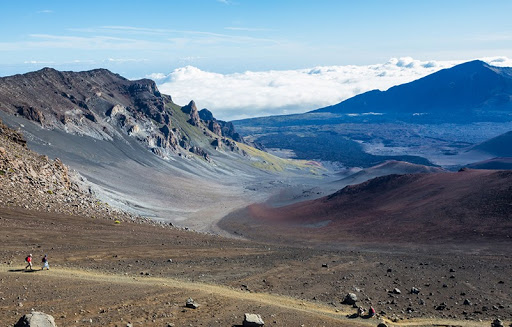 Sliding Sands, Haleakala National Park; Hawaii Tourism Authority (HTA) / Tor Johnson
Sliding Sands, Haleakala National Park; Hawaii Tourism Authority (HTA) / Tor Johnson
If you’re looking for a real adventure, there are two excellent backpacking trips on Maui that you might consider. You can check out Holua Campground for a great place to hike to and stay inside of Haleakala National Park. Two trails that lead to this campground, the Halemau’u trail can get you there in a pretty easy 3.7-miles.
Alternatively, you can get there from Sliding Sands in about 7.4 miles.
Paliku campsites is another awesome location you might plan an extended trip to. You can get there in 9.3 or 10.5 miles from the Sliding Sands and Halemau’u trailheads, respectively.
This journey is a bit more arduous, but it’s worth it to make it to one of the most remote locations in all of Hawaii.
2. Hiking
If you’re looking for day hikes, Maui’s got plenty and through all different sceneries. Go on a coastal trek, a jungle excursion, or a hike in Haleakala — a spot with landscapes unlike anywhere else on the island. Check out some of our favorites on the map below.
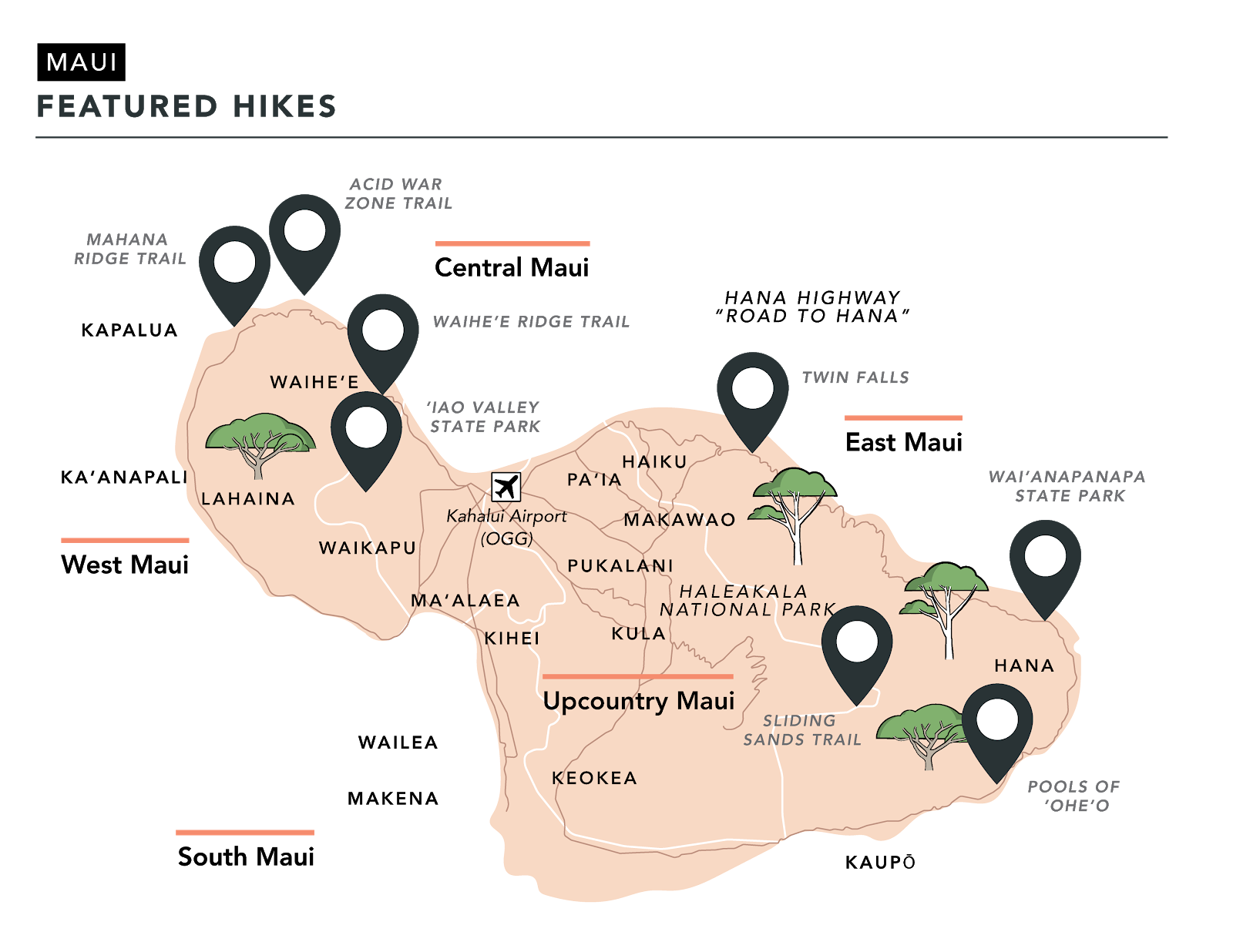
RELATED: Where to Camp in Maui
3. Visit a Breathtaking Beach
Maui is the second-largest Hawaiian island, being about 125 square miles bigger than Oahu. However, Maui gets almost a million fewer visitors per year than Oahu and has a residential population that is about six times smaller.
You may have also read — perhaps in a particularly informative travel guide — that Maui has upwards of 30 miles of beach shore.
There’s a few on each shore, so you shouldn’t have any trouble finding a beach, wherever the urge to channel your inner beached whale hits you. Check out the map below to see some of our favorite beaches on the island.
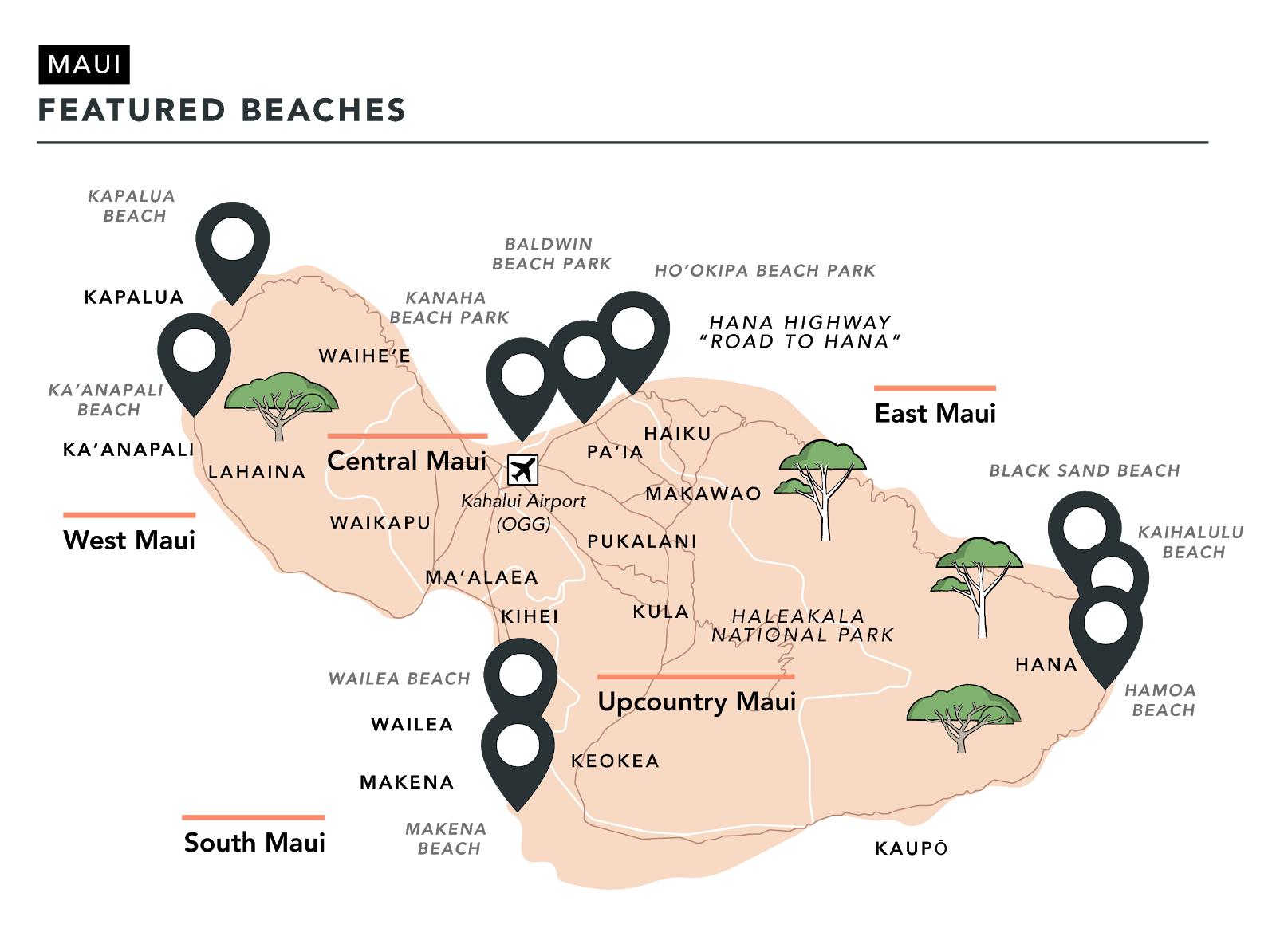
4. Snorkel
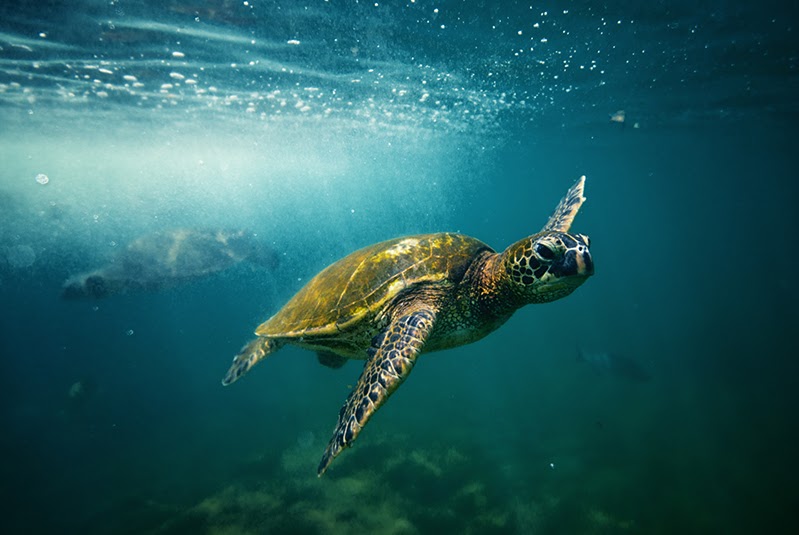 Island of Hawaii Visitors Bureau (IHVB) / Tyler Schmitt
Island of Hawaii Visitors Bureau (IHVB) / Tyler Schmitt
There are tons of great snorkeling locations on Maui. You’ll find the surreal underwater experience you are looking for if you decide to snorkel Maui with its crystal clear water, tropical fish, eels and, of course, sea turtles.
Honolua Bay
Honolua Bay is an excellent snorkeling location with a huge array of species. This is an awesome location, accessed from a quick hike, which prevents overcrowding.
However, that’s not to say this is a difficult spot to find or get to--this is some of the most convenient snorkeling on the island.
You should always treat the land and water with the utmost respect no matter what, but you should also know that this area is federally protected which means they will flay you for any infraction whatsoever.
RELATED: Honolua Bay Travel Guide
Turtle Town
Turtle Town near Maluaka Beach is also excellent for seeing all kinds of ocean life including turtles, tropical fish, and eels. There have also been multiple humpback whale sightings while snorkeling in this area, so be on the lookout for giant masses in the distance in the spring months. It’s a bit of a swim to get to the various reefs referred to as Turtle Town, but it’s definitely worth the effort. Please remember, sea turtles are protected species in Hawaii and getting too close will result in a fine.
A Few More To Try...
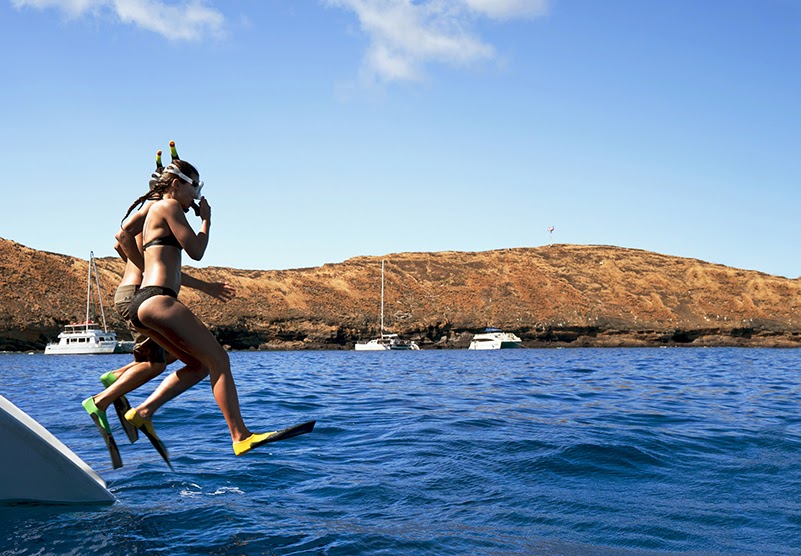 Snorkelers at Molokini; Hawaii Tourism Authority (HTA) / Blake Bronstad
Snorkelers at Molokini; Hawaii Tourism Authority (HTA) / Blake Bronstad
Kaanapali Beach, Ahihi Kinau Reserve, and Molokini are a few other locations that are excellent for snorkeling. The reserve is amazing and keeps ocean life safe from human-created dangers like pollution and overfishing.
Molokini has some of the clearest water in Hawaii, which makes it ideal for spotting all of the beautiful tropical sea life. But, this is located at an offshore crater and is best accessed by tour boat.
There are also several companies from which to rent snorkeling equipment. In Western Maui, consider Boss Frogs and The Snorkel Store are great options in Lahaina. The Maui Snorkel Store is a good option in Kihei. For Wailea try Snorkel Bob’s or Auntie Snorkel Beach Rentals.
5. Surf
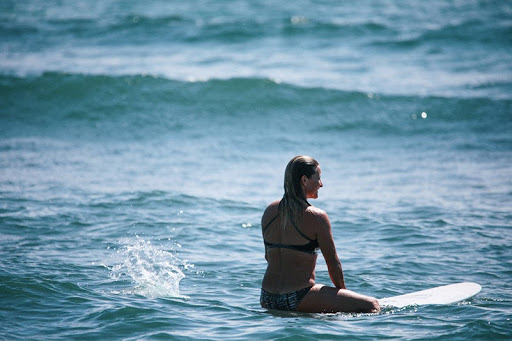 Hawaii Tourism Authority (HTA) / Brooke Dombroski / @brooklynhawaii
Hawaii Tourism Authority (HTA) / Brooke Dombroski / @brooklynhawaii
Maui has some excellent surf locations whether you’re a pro trying to get your fix or a beginner looking to catch your very first wave. Ho'okipa Beach is a staple in the Maui surf community, but the waves are HUGE in winter and you should only visit to watch the pros in action. Lahaina Reefs has several breaks that are perfect for all skill levels. The waves in Honolua Bay seem to roll for ages so this is a great spot for long, leisurely rides.
There are tons of great places to rent surfboards on Maui. Zach Howard Surf really knows what it’s doing and offers great lessons. Maui Surfboards in Kaanapali offers excellent deals. 808 boards offers free delivery and pickup. Island Surfboard rentals is also excellent.
6. Shop in the Sun
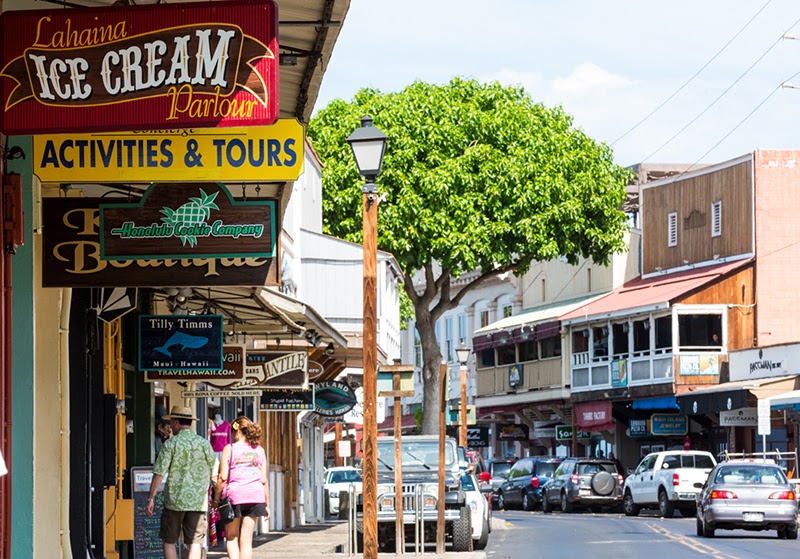 Lahaina; Hawaii Tourism Authority (HTA) / Tor Johnson
Lahaina; Hawaii Tourism Authority (HTA) / Tor Johnson
While nothing will compare to the size and shopability of Waikiki, if you’re looking for that experience, you can find several similar beachy shopping areas on Maui.
The Shops at Wailea run through one of the islands main resort neighborhoods and are a very popular option.
Lahaina has tons of shops. The beaches on Maui’s western shore often have lovely boardwalks cute boutiques and different kinds of food.
7. Get an Adrenaline Rush
Looking to get your adrenaline pumping? You have a few options on Maui. Skydiving is extremely popular in all the Hawaiian islands, although you’ll have fewer options for skydiving agencies on Maui. Maui Skydiving is probably your best bet.
There are several zip lining companies, as well, including Maui Ziplining Company, Skyline Eco-Adventures, and Jungle Zipline Maui. If you’re looking to get your adrenaline fix underwater, the Maui Ocean Center offers several shark cage diving tours.
RELATED: Maui Ocean Center Guide and Four Zipline Adventures in Maui
8. Ocean Kayak or SUP
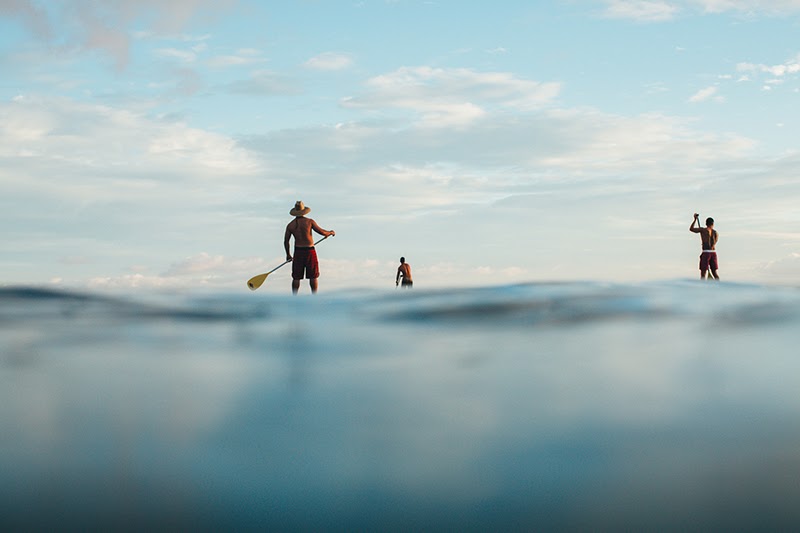 SUP; Hawaii Tourism Authority (HTA) / Mark Kushimi
SUP; Hawaii Tourism Authority (HTA) / Mark Kushimi
Ocean kayaking, SUPing, and other water sports are some of the most rewarding experiences in Maui. You get to have the awesome amounts of fun that each activity offers while also getting one of the most special views that the world has to offer. The Maui coast is truly a natural wonder.
You can rent seacrafts from Maui Kayaks, 1-800-Snorkel, or The Snorkel Store. The Snorkel Store seems to have the best prices.
9. Take a Tour
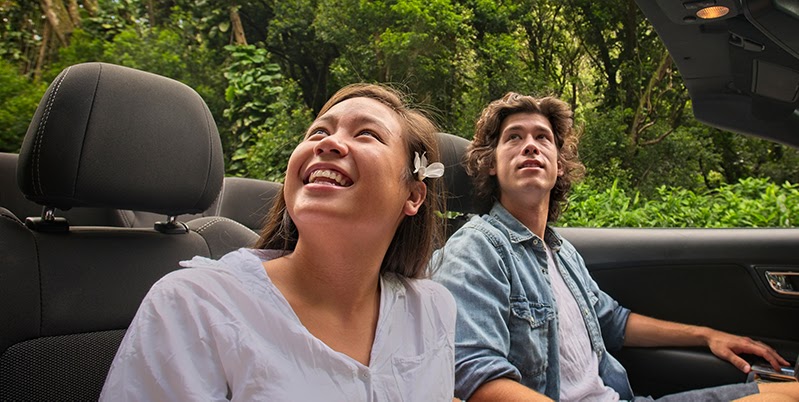
There are tons of awesome tours to take on Maui! Shaka Guide offers six audio driving tours on the island. These include our:
- Classic Road to Hana Driving Tour
- Loop Road to Hana Driving Tour
- Reverse Road to Hana Driving Tour
- Sunrise at Haleakala National Park Driving Tour
- Sunset and Stargazing at Haleakala National Park
- West Maui Coastal Driving Tour
But we won’t try to sell you too hard; there are also plenty of other tours to consider! You might love a whale watching tour from late winter to early May. Helicopter tours are a great way to see the beauty of Maui and other islands in their entirety.
If you’re looking for a more cultural adventure, check out an outrigger tour. One awesome combo experience to consider is a whale watching outrigger tour.
Best Times to Visit Maui
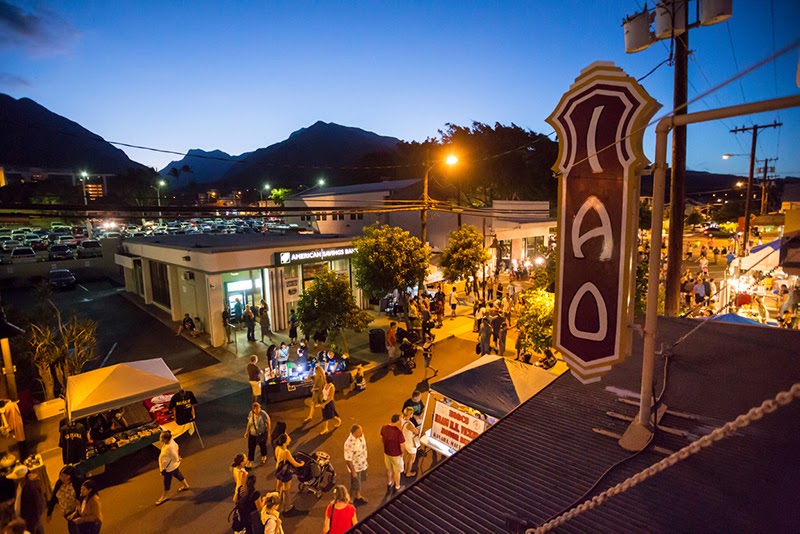 Hawaii Tourism Authority (HTA) / Tor Johnson
Hawaii Tourism Authority (HTA) / Tor Johnson
There is never a bad time to visit Maui, but you might be looking for something specific from your stay, such as whale watching, in which case you’ll want to be careful about when you plan your trip. To help you decide, here is what the island is like different parts of the year.
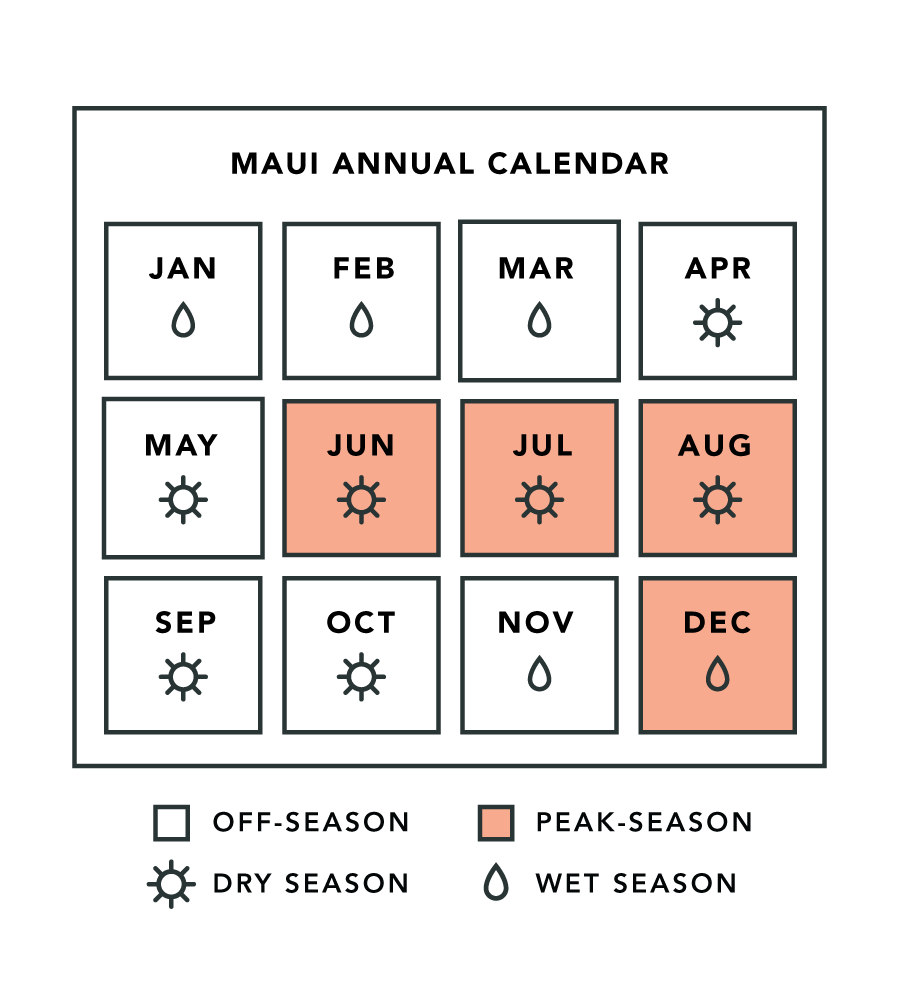
Maui is generally at its most crowded for the months of June, July, August, and December when Hawaiian tourism is at its peak.
The least crowded months are January, February, April, September, October, and November.
So, When Should You Visit?
If you hate crowds or love meeting new people, you might try to plan around one of the lulls or busy seasons. Also, keep in mind that months with fewer travelers are better if you're looking to budget with regard to airfare and lodging.
Maui, like the rest of Hawaii, only has two seasons: a dry summer from April to October and wet winter from November to March. Keep in mind that each microclimate is vastly different and some areas receive rain all year.
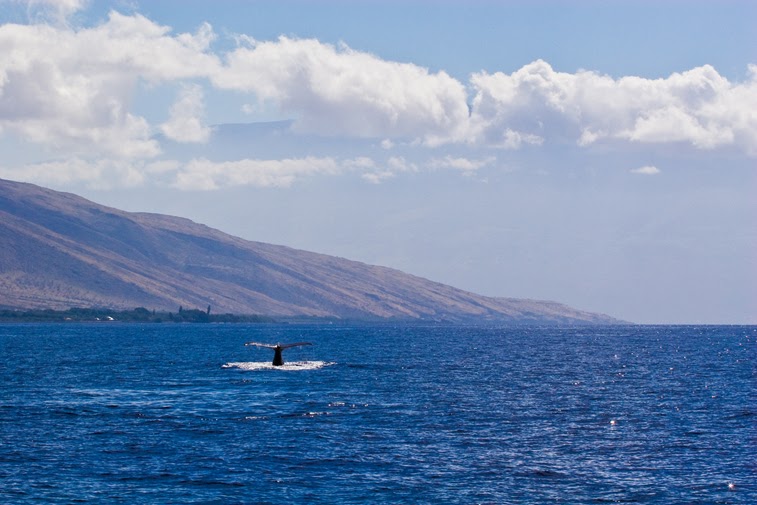 Hawaii Tourism Authority (HTA) / Tor Johnson
Hawaii Tourism Authority (HTA) / Tor Johnson
Whale sightings are the most common in February, March, and April, but you might see them by land or sea from December all the way to May. November to early-March has the best swells for surfing, although you can usually find a wave to catch all year round.
Weather and Climate
The thing about Maui’s weather is that it is incredibly different depending on what part of the island you're on. Little zones called microclimates, created by the gradient geography and trade winds, influence the dramatic weather in different zones.
You’ll need to pay attention to these microclimates in order to effectively plan your trip to Maui.
Maui has three main microclimate types:
- desert
- rainforest
- mountainous
Here's What To Expect In Each
The desert regions receive very little rainfall and tons of sun. The desert regions are where you’ll find many of the best beaches.
The rainforest region receives a lot of rainfall from clouds that build up along the bases of Maui’s mountains.
The mountainous regions are marked by shrubbery and freezing nighttime temperatures. You can find scores of amazing hikes in both the rainforest and mountainous microclimates.
Wailea, Lahaina, Haleakala, Kihei, and Kaupo are desert microclimates. Hana, Haiku, Kipahulu, Makawao, and the West Maui Mountains are rainforest microclimates.
The mountainous microclimates are the upper regions of Haleakala, Kula, and Ulupalukua.
RELATED: When's the Best Time to Visit Hawaii
Best Ways to Get Around Maui
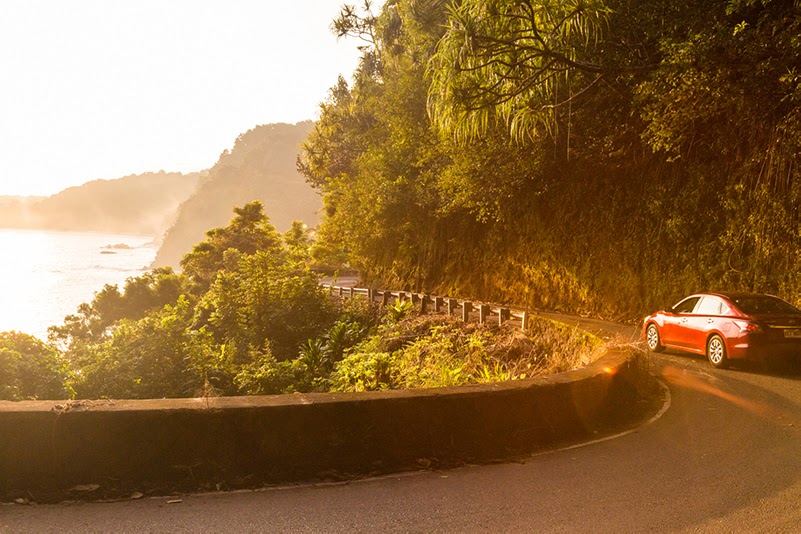 Hawaii Tourism Authority (HTA) / Tor Johnson
Hawaii Tourism Authority (HTA) / Tor Johnson
Maui doesn’t have as many options for transportation as the more developed islands like Oahu and the Big Island of Hawaii. For the most part, you’ll be limited to car rental and the public bus system for getting around Maui.
There are tons of car rental locations in Kahului, where you will almost certainly fly in. This is probably the best time to pick up your rental. There are also a couple of rental agencies on the islands western shore and several in the Maalaea Bay area.
The Maui Bus system is pretty effective and can get you to almost any part of the island. You can find information and route maps for the Maui Bus system here. This interactive map is also quite helpful.
RELATED: Road To Hana: Guide To Having An Epic Driving Tour
BUDGETING
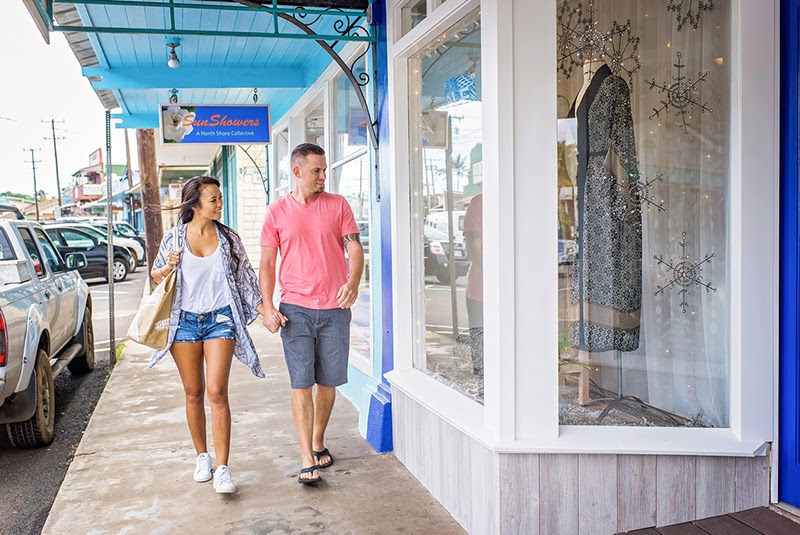 Hawaii Tourism Authority (HTA)
Hawaii Tourism Authority (HTA)
Maui is one of the most expensive Hawaiin islands which also makes it one of the most expensive places in America. Dining, lodging, ticketing, and transportation and are all going to take up a lot of funds in your budgeting plan.
Food Costs
Food is extremely expensive on the Hawaiian islands, and this is particularly true for Maui. You can plan around paying somewhere around $7-$10 dollars for milk and about $6 for a dozen large eggs.
Restaurants are also going to run a bit higher than the mainland and other Hawaiian islands. If you plan to eat out at restaurants, you’ll probably want to set aside around $20 per person per meal for a casual restaurant--not including cocktails if you so desire any libations.
Lodging Costs
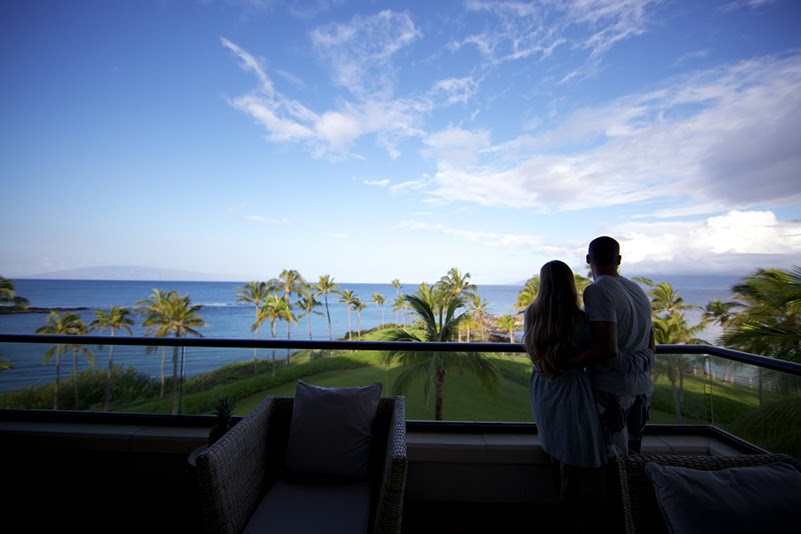 Hawaii Tourism Authority (HTA) / Max Wanger
Hawaii Tourism Authority (HTA) / Max Wanger
If you're flexible, you can save tons on lodging in Hawaii. Hotels and resorts can be great experiences, but they are also usually pretty expensive. Airbnbs are a much better option for saving money while maintaining your comfort level.
For a hotel, you can expect to pay anywhere from around $150 to thousands a night. You can find extremely expensive Airbnbs. However, there are also quite nice options for less than $100 a night.
All types of accommodations in Hawaii will be less expensive during the lull months of January, February, April, September, October, and November. You might save anywhere between $50-100s a night depending on the room.
Ticketing and Airfare
Maui is one of the more expensive islands to fly to. But with any destination, you can save a lot by visiting in a lull season and buying tickets early. If you’re looking to save, the best months to fly to Hawaii are January, February, April, September, October, and November.
A round-trip flight from the east cost will most likely be at least several hundred dollars more than from the west coast of the United States. You can use tools such as Google Flights to help find the best deals.
Other Transportation Costs
You can find rental cars for as little as $40 a day on Maui, which is probably going to be your best bet for getting around the island quickly. There are several options for rental agencies on most parts of the island.
Buses are a great way to save money. You can get a bus ticket for $2 one way, but keep in mind that it’ll be another $2 every time you transfer. You’re better off getting a day pass for $4 if you plan on taking more than one bus ride.
Entertainment Expenses
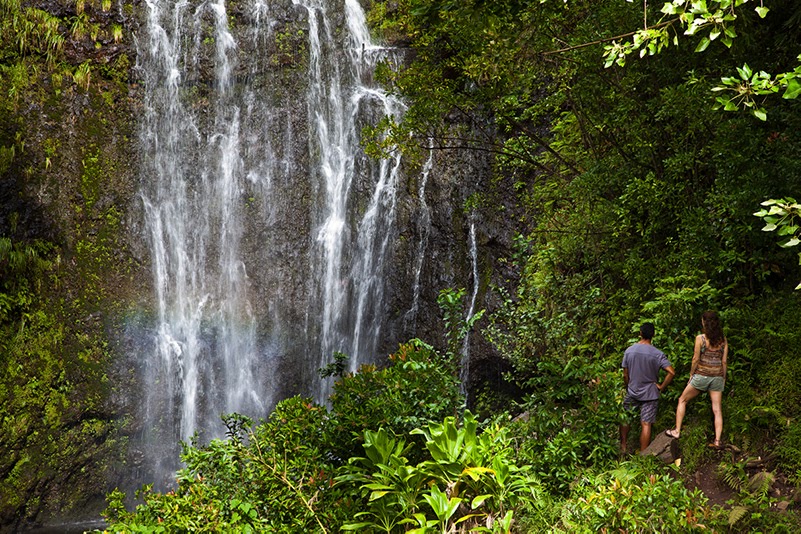 Hawaii Tourism Authority (HTA) / Tor Johnson
Hawaii Tourism Authority (HTA) / Tor Johnson
The great thing about the Hawaiian islands is that once you’ve accounted for travel, transportation, food, and lodging, much of your entertainment is free. Once you’re on the island you’re free to hit every beach and hike you want--although here may be park entrance fees associated with some locations.
Of course, you might also be interested in some paid experiences. To help out we collected a few price tags for adventures you might be interested in purchasing.
Here are some approximate rates to help get you started:
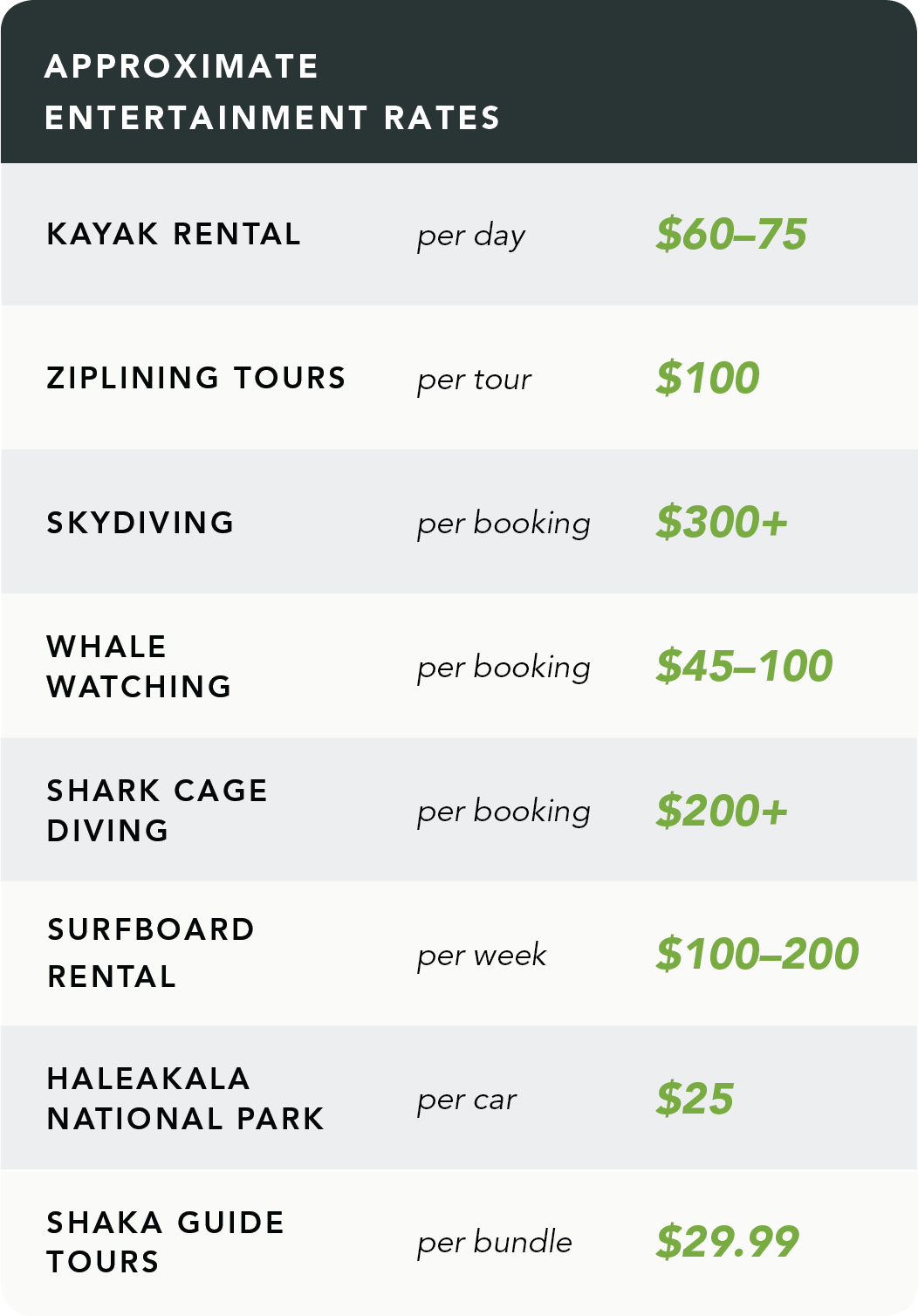
RELATED: 5 Family-Friendly Activities in Maui
Money-Saving Tips
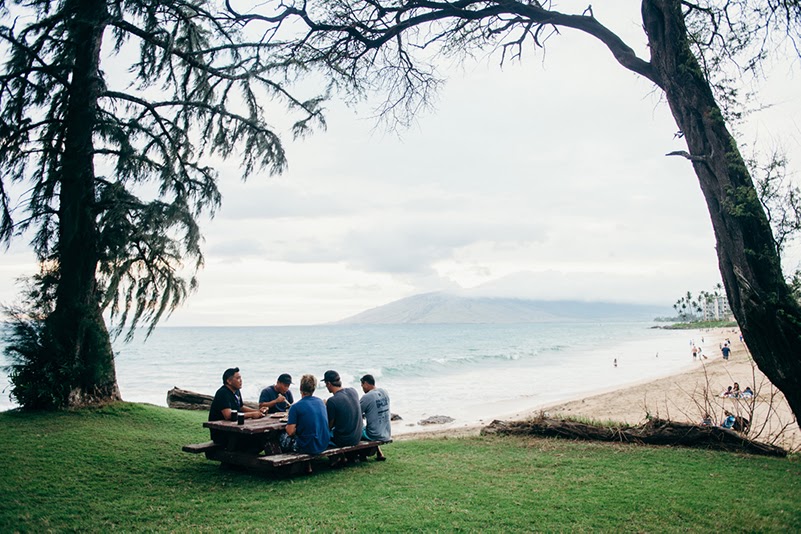 Hawaii Tourism Authority (HTA) / John Hook
Hawaii Tourism Authority (HTA) / John Hook
If you are looking to save some extra cash, we’ve got some bonus ideas that can help you save big! Some of them are perfect no matter what your plans are, but others will only work for some people and situations.
Stay in an Airbnb
Airbnb is a great way to save money wherever you stay. You’ll often get an entire house to yourself for less than half of what you might pay for a hotel or resort.
Plan with a Friend or Group
Check Groupon before you leave for awesome deals on some of the adventures mentioned in this guide. If you’re traveling as a group, many agencies can give you huge discounts.
Or, Travel Alone
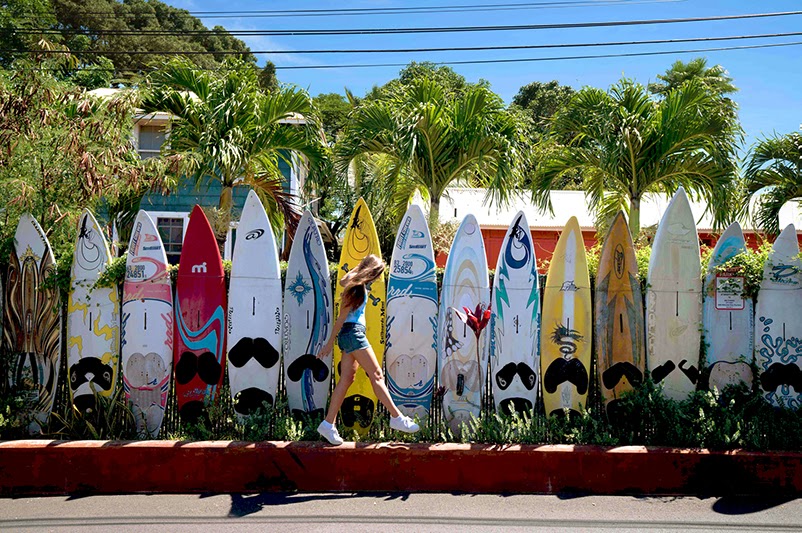 Hawaii Tourism Authority (HTA) / Blake Bronstad
Hawaii Tourism Authority (HTA) / Blake Bronstad
Flexibility is also a great way to save money on Maui, and you’ll never be more flexible traveling than when alone. If you can adjust your plan easily, you’ll be able to take advantage of surprise deals and unexpected budgeting options like flying standby.
Military, Senior, Resident, Children Discounts
If you are in the Military, a senior, a child or a resident of Hawaii, you can save a lot on many experiences and adventures. If you’re in school, make sure to check out student discounts, as well.
Traveling to Maui during the Covid-19 Pandemic
If you are traveling to Maui in 2022 amidst the ongoing pandemic there are some things you need to know. Check out our guide with all the pretravel requirements you'll need to make prior to visiting Hawaii.
If you've been to Maui before, please note that many of your beloved restaurants may have closed and many attraction may still be closed or have modified hours. Make reservations in advance if there's something you'd really like to do or a restaurant you'd love to try.
Also, please remember to practice aloha on your trip. Understand that Maui is an isolated island with limited medical resources. Respect locals by adhering to local mask mandates, social distancinng, and following all state protocols.
RELATED: 12 Ways to Be a Respectful Traveler to Hawaii
Conclusion
You now have everything you need to start planning your trip to Maui! In addition to giving you what you need to plan, Shaka Guide hopes that we have saved you some money and helped plan your budget.
Plans and budgets don’t always pan out, but they are still pretty useful to have on a vacation. But if you’re more of a go-with-the-flow type, then Hawaii is definitely the place for you as well. Just make sure to keep this guide close by in case you find yourself looking for something to do.
But hey, if you don’t get to see an attraction or have an experience you were hoping for, don’t worry, Maui will be here this time next year. Come on back anytime!



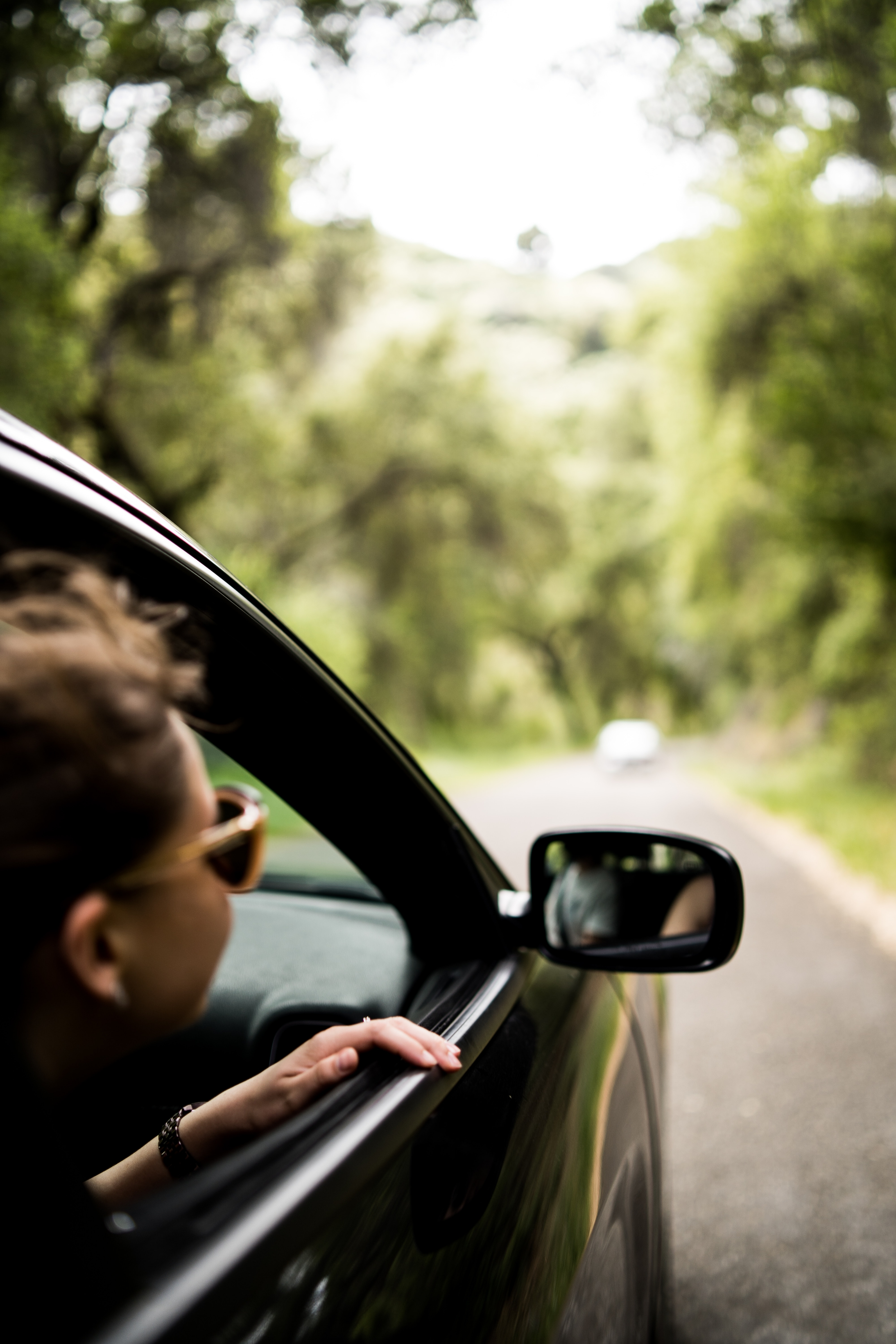



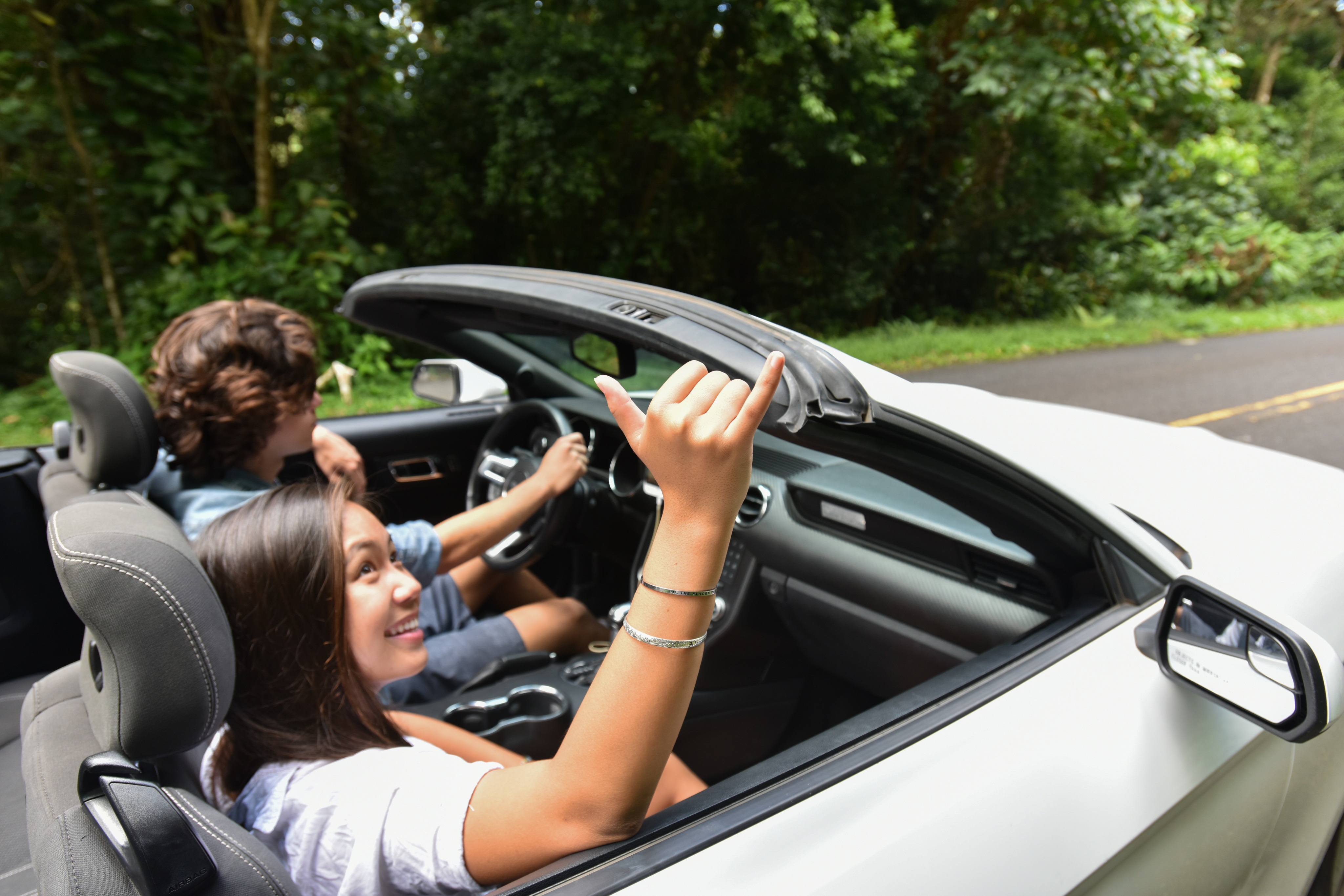




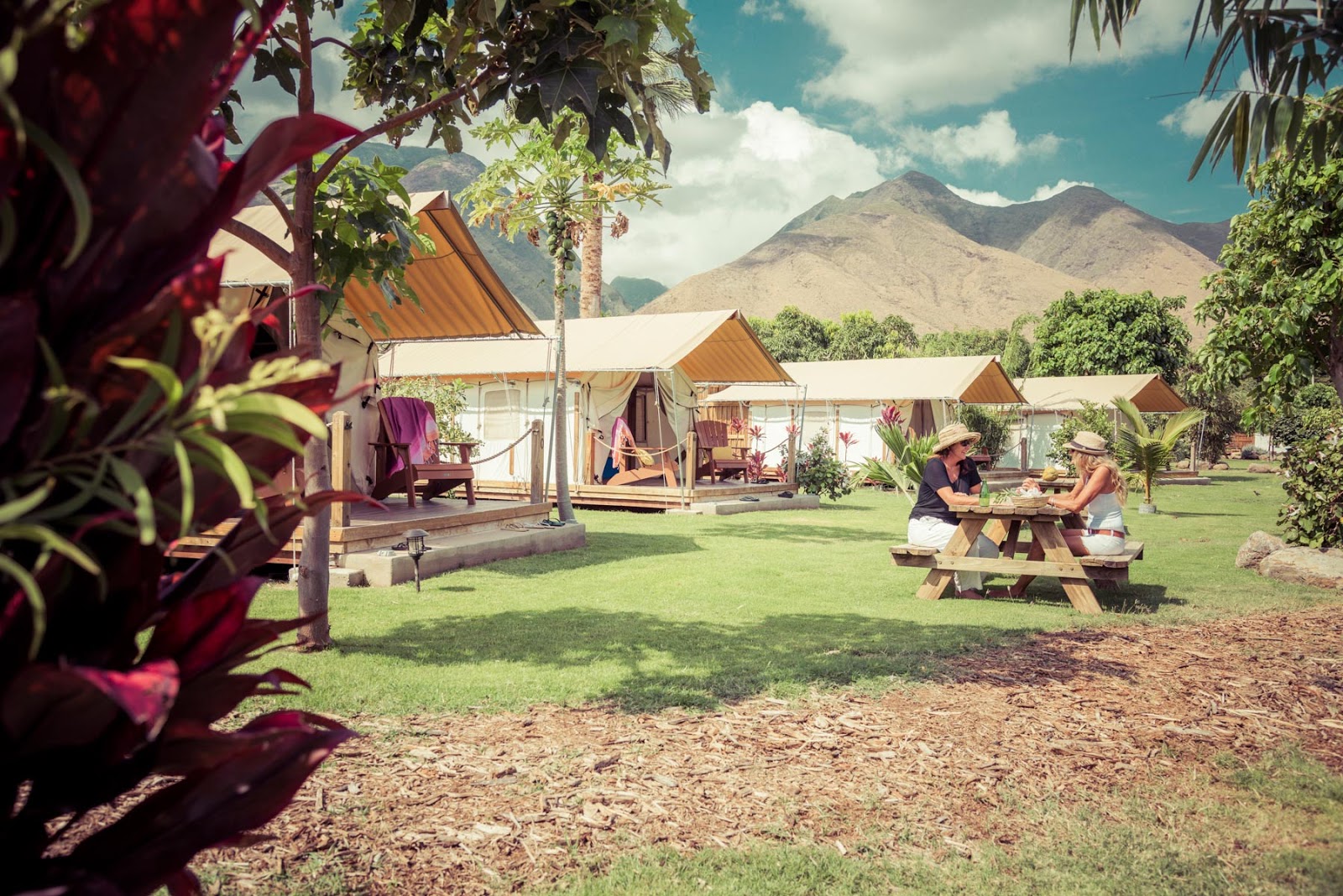 Camp Olowalu
Camp Olowalu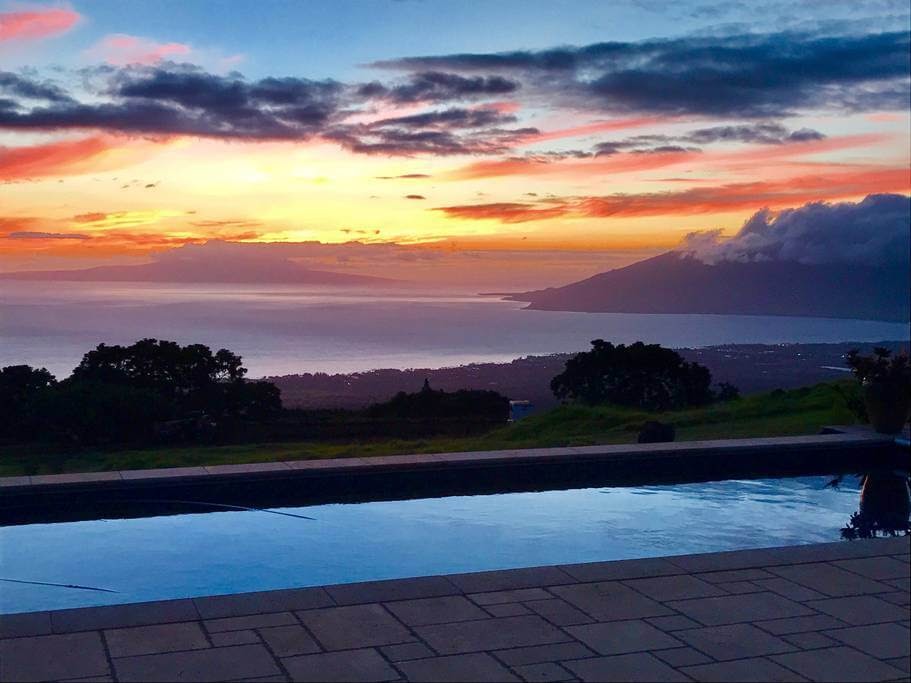 Keokea Ranch Estate
Keokea Ranch Estate
